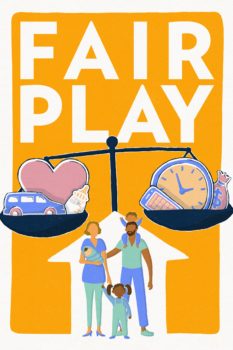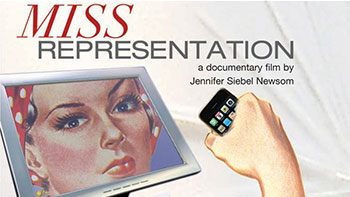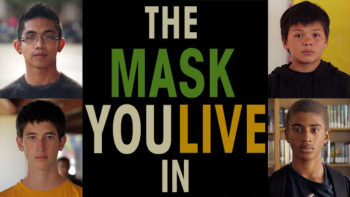Blogger Melissa Fabello explores the influence of pop music on teen perceptions of dating violence, and what we can do to help.
“But I don’t care what they say — I’m in love with you
They try to pull me away, but they don’t know the truth”
It’s 2008, and I have a crush on a girl who is tall and lean – like a cowboy with her humble swagger, except for her perfectly placed, undoubtedly womanly curves. She has skin the color of milk chocolate, smooth and melting, and a chunk of magenta dyed into her faux hawk. She would have been my awakening had I not already known that I was attracted to women. With a bright smile and a disarming demeanor, she is the kind of feminine divine that inspires poetry. And not least of all of her attributes, she has something else, too, that makes my desirous heart ache: a girlfriend – and one who doesn’t treat her with the respect that she deserves, at that – one who is manipulative and secretive and controlling.
In 2008, ringback tones are a thing (they’re not still, right?), and so every time that I call her, I am forcibly reminded of her situation. Leona Lewis croons from the other end, as I wait for my beloved to pick up the line. Clearly, this ringback tone is a passive-aggressive attack against her girlfriend, albeit thinly-veiled. I imagine that she hopes that her girlfriend will hear it and then recognize her abusive behavior, perhaps rectifying it. “You cut me open and I keep bleeding,” she cries, using Leona’s voice as a disguise. “I keep, keep bleeding love.” With my phone in my hand, I sit there wondering why, if my darling can see herself mirrored fully in the lyrics of this song, how does she not understand that she deserves better? How does she not recognize Lewis’ song as a warning against danger?
The base answer, really, is simple: Those of us who are linguistic consumers of music prefer songs with lyrics to which we can relate. And since the advent of the use of social media to relay our every innermost thought to our peers (AIM away messages, anyone?), we’ve been posting vague, passive-aggressive, “wait-is-she-talking-about-me?” lyrics to speak for us. And while it’s absolutely important that these stories are told – that there is a voice for these feelings and a place in the music industry for these issues – I’m worried. Because while music should validate our feelings and tell all kinds of stories about the vast beauty (and pain) of human relationships, it shouldn’t promote unhealthy relationships by way of normalizing them. Because that’s what songs about staying with someone who hurts you and ignoring the alarm of others in the name of a supposedly misunderstood love are doing: normalizing the cycle of abuse. While songs about walking away from controlling and manipulative relationships certainly exist and are popular (um, every Kelly Clarkson song ever), songs about putting up with emotionally abusive partners – about giving them one more chance to change – are much more prevalent. Since the songs depicting emotional abuse aren’t forthright, they sneak into our subconscious minds, convincing us of a false reality: that these relationships are normal – or worse, that they’re romantic. Instead of recognizing these songs as warnings, we tend to internalize them as solidarity because that’s what we’re trained to do. A lack of media literacy education leaves us without the tools to critically analyze our relationships with music, and a lack of information about what healthy dating looks like leaves us without the tools to critically analyze our romantic relationships with others.
This is especially true of teens, who lack the cognitive ability to weigh options and consider consequences. And while I don’t mean to imply that teenagers are mindless consumers with no critical analysis skills (because I don’t believe that), it is important to consider how the norms in popular music are internalized when there’s no voice of reason to explain that oftentimes, the relationships depicted in these songs are unhealthy.
With that very idea in mind, I have created a short virtual workshop – a presentation which introduces the basics of teen dating violence, outlines the problem of normalization of abuse in music, and offers a few suggestions for real-life application of how to use music to facilitate conversations with friends about healthy dating. After all, “Learning how to develop healthy relationships, including romantic ones, is a critical task for…development during adolescence” and “[w]ithout guidance, girls have little basis for understanding when relationships become abusive.” And they’re not necessarily getting this guidance from their parents either, considering that 81% of parents either don’t know if or don’t believe that dating violence is an issue for teenagers. So if adolescents are forming their norms through social and media interactions, then the best that we can do for them is provide them with accurate information and resources.
My virtual workshop, which is in the form of a Prezi, can be found here (and is embedded below). If you’ve never used Prezi before, fear not. It’s basically just a way cooler version of PowerPoint. It’s best viewed in full-screen, and all you need to do is click the arrow to move from slide to slide. And be sure to contact me with any comments or suggestions!
These statistics affecting teenagers can change. We just need to show them why to care and how to help. What will you do today to change tomorrow?
References
1. Pinkleton, B.E., Austin, E.W., Cohen, M., Chen, Y., & Fitzgerald, E. (2008). Effects of a peer-led media literacy curriculum on adolescents’ knowledge and attitudes toward sexual behavior and media portrayals of sex. Health Communication, 23(5), 462-472.
2. Durham, M.G. (1999). Articulating adolescent girls’ resistance to patriarchal discourse in popular media. Women’s Studies in Communication, 22(2), 210-229.
Check out Melissa’s website ToughXCookies.com and follow her on Twitter @fyeahmfabello



